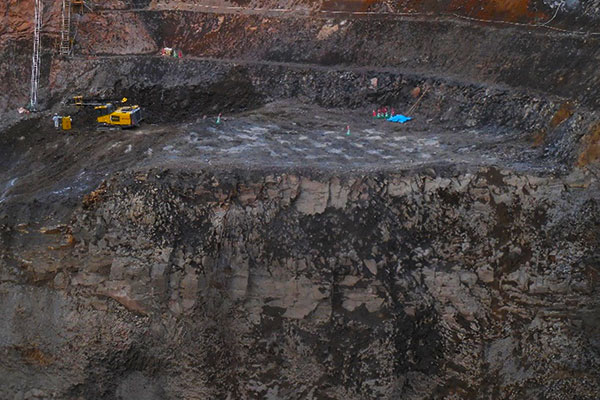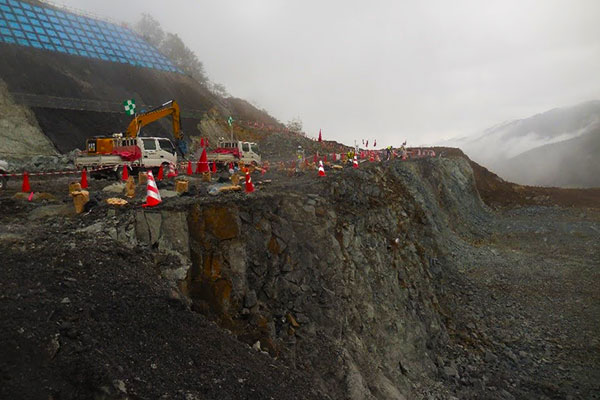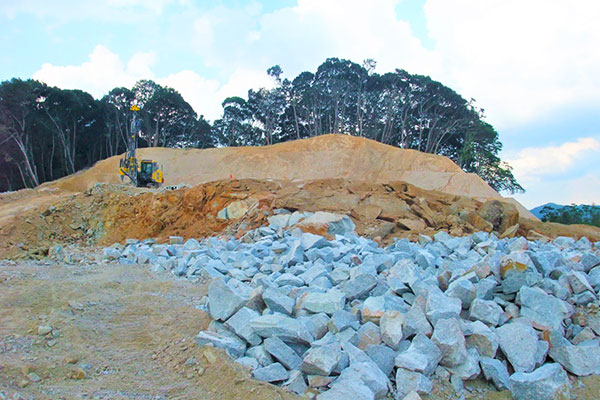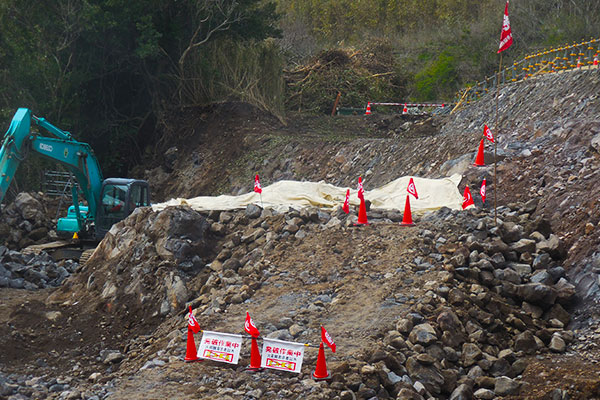ROCK BLASTING
Primary and secondary crushing using explosives
We develop a blasting plan matched to the site conditions and work process to increase work efficiency.
Safety is our highest priority in our work, and we implement overall management in the blasting process.
BLASTING TECHNOLOGIES
-
-
BENCH BLASTING
In large-scale construction, this construction method involves making the bench surface into the shape of a staircase and making the faces flat, enabling safe work and the planned excavation of large amounts of soil and rock, and greatly reducing the need for rock collection.
-
-
-
SPREAD BLASTING
This general-purpose method is easy to control in a variety of conditions.
-
-
WIDE SPACE BLASTING
This method entails enhancing the blasting effect through adopting a wide interval between holes in respect to the minimum resistance level.
-
LOOSE BLASTING
Mainly used on soft rock on sites in close proximity to safe property. This method also reduces vibration, noise and flying stones.
-
SECONDARY BLASTING
This method entails pulverizing large blocks, boulders, etc. that are generated in primary blasting.
-
TRENCH BLASTING
This method is used for the excavation of pipelines, water channels and other ditches.
-
PRESPLITTING
This method entails boring holes in cutting slopes and cross sections and conducting preliminary blasting ahead of the main excavation work, thereby reducing the slope finishing load placed on heavy machinery.
-
LINE DRILLING
In this method, holes are bored in line with the cutting slope or cross section, but explosives are not charged inside the holes, and the effects of blasting are limited to the holes only.
-
UNDERWATER BLASTING
This method is adopted for the maintenance of ports, the creation of navigation channels, and the installation of caisson-type piles for bridges.
-
LOW VELOCITY DETONATION BLASTING
By utilizing explosives with a low detonation velocity, this method makes it possible to reduce the blasting vibration to between around 1/2—1/7 cm/sec.
-
DEEP FOUNDATION BLASTING
This type of blasting is used for the foundation drilling of bridge abutments. Manual boring is used to bore small-diameter holes and a crawler drill is used to bore large-diameter holes.
The blasting pattern is the same used for tunnel work.





